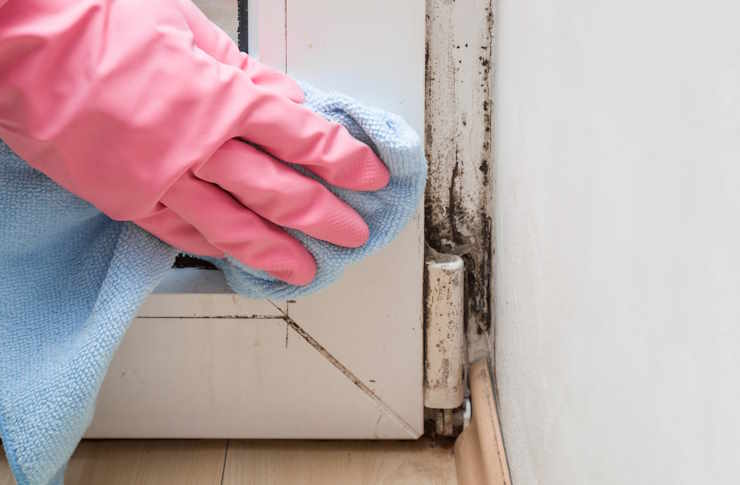Removing Stains from Between Tiles: Techniques That Protect Surfaces
Stains between tiles can dull the look of any tiled surface and signal issues like mildew or surface wear. This article outlines practical cleaning, disinfection, and protection strategies that focus on preserving tile and seams while addressing common causes such as mold, residue, and surface degradation.

Stains that appear in the narrow seams between tiles are often a mix of dirt, soap scum, mineral deposits, and organic growth. Effective treatment begins with understanding what caused the discoloration: long-term moisture encourages mildew and mold, hard water leaves mineral streaks, and abrasive cleaning can itself damage edges and tile glaze. Protecting the surface during stain removal means selecting appropriate cleaners, testing on an inconspicuous area, and using tools that remove deposits without scraping or etching. This approach helps restore appearance while reducing the need for frequent resurfacing or full restoration later.
Tile and seams: why grout stains
Tile joints and seams are porous by design when filled with traditional materials. They trap moisture, oils, and airborne particles, creating a substrate where stains and biological growth take hold. Tile surfaces themselves may be glazed and relatively nonporous, but the seams often absorb cleaning agents or discolorants, so targeted cleaning is essential. Regular inspection of tile and seams helps identify early staining and prevent deeper penetration that leads to structural or aesthetic damage. Choosing the right technique depends on the tile material (ceramic, porcelain, natural stone) and the condition of the seam material.
Cleaning methods for stubborn stains
Begin with gentle strategies: warm water, a soft brush, and a neutral-pH cleaner remove many surface stains without harming tiles. For more persistent discoloration, poultices or paste cleaners formulated for tile seams can draw out embedded residues. Avoid highly acidic cleaners on natural stone and avoid bleach on coloured or old seam materials that may fade or degrade. Mechanical options like steam cleaning can lift grime while minimizing chemical exposure, but should be used cautiously on older seams. Always rinse thoroughly and test methods on a small patch first to confirm compatibility with both tile and seam materials.
Mildew and mold: safe disinfection
When stains are caused by mildew or mold, disinfection becomes part of the cleaning process. Use EPA-registered or manufacturer-recommended disinfectants compatible with tile surfaces, or consider diluted hydrogen peroxide or specialist mold cleaners where appropriate. Apply disinfectant after physical cleaning to reduce microbial load, then ventilate and dry the area completely to limit recurrence. Protective gloves and eye protection are advisable when using disinfectants. Persistent biological growth may indicate ongoing moisture issues that require addressing at the source to avoid repeated treatments.
Sealing and resurfacing to protect surfaces
Sealing seams and, where applicable, resurfacing tiled areas can reduce stain recurrence and simplify maintenance. Penetrating sealers for porous seam materials limit absorption of liquids and staining agents, while surface sealers can add a barrier to tile glaze. Resurfacing may involve replacing degraded seam material or applying a grout colorant to renew appearance; these measures should be selected to match tile type and traffic conditions. Properly applied sealants also make routine cleaning more effective and lessen the need for abrasive techniques that can damage tiles over time.
Restoration and maintenance planning
A structured maintenance plan extends the life of tiled surfaces. Restoration work—such as re-pointing seams, replacing discolored seam material, or addressing loose tiles—should be scheduled based on inspection findings rather than only when stains become obvious. Routine maintenance includes regular cleaning with mild products, ensuring good ventilation in wet areas, and promptly drying spills. For more complex restoration tasks or when uncertain about materials, consult local services or a qualified professional in your area to assess damage and recommend compatible restoration and protection strategies.
Ecofriendly approaches and product choices
Ecofriendly cleaning options reduce chemical exposure while still tackling stains effectively. Enzyme-based cleaners, diluted vinegar solutions for non-stone tiles, and steam cleaning are viable alternatives when matched to the surface type. Choose products labeled biodegradable and check that they are safe for the tile and seam materials in use. Proper disposal and minimal use are part of an eco-conscious approach. For areas with sensitive occupants or pets, select low-odor, low-VOC cleaners and prioritize mechanical removal plus targeted, minimal chemical treatment to balance disinfection with environmental considerations.
Conclusion
Removing stains from between tiles calls for a careful balance between effective cleaning and protecting the underlying surfaces. Identify the stain type, select compatible cleaning or disinfection methods, and use sealing or resurfacing where appropriate to prevent recurrence. Regular maintenance and attention to moisture control reduce the need for aggressive restoration and help preserve tile appearance and function over time.






